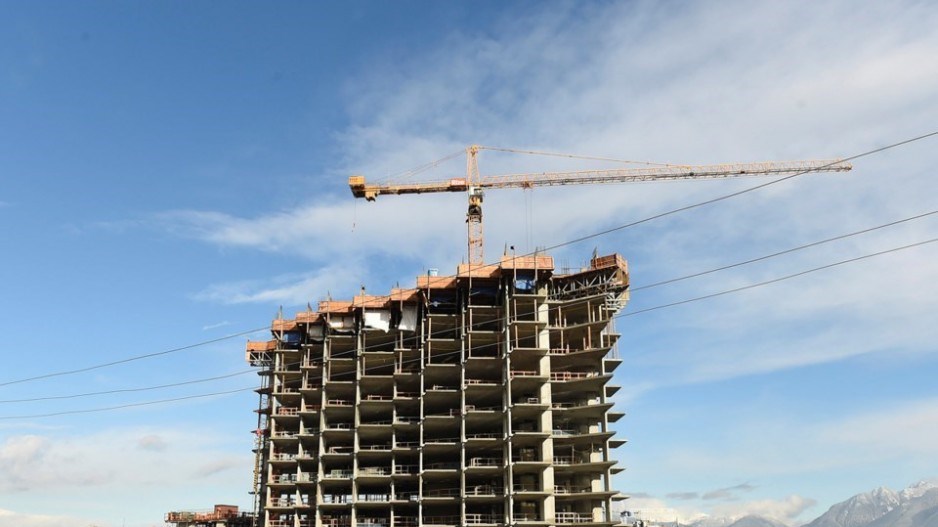This month, British Columbia took another significant step along its climate action path.
The release of the Zero Carbon Step Code has given governments across the province a new set of tools to mandate or incentivize property developers and builders to deliver lower-carbon new buildings.
Sitting alongside the Energy Step Code, it brings us closer to the provincial goal of all new buildings being zero carbon by 2030.
This is excellent news for anyone with a vested interest in seeing a high-quality built environment in B.C., which is the first province or territory in Canada to introduce this change towards decarbonization. Currently, the built environment is responsible for 40 per cent of carbon emissions worldwide, so anything we can do to mitigate the growing impacts of climate change on all aspects of our lives is a sign of progress.
Decarbonizing new buildings as much as possible now also is the first and least costly step to meeting our climate targets, given that retrofitting them later on would take many more resources.
Like the Energy Step Code, this new measure is a “stretch code,” which sets incrementally increasing levels of performance to create a clear and transparent pathway for industry, allowing time for the market to adjust and mature. The Zero Carbon Step Code has four levels of increasing stringency, which can be achieved by electrifying the mechanical systems of our homes and buildings. Here are the various steps:
- Measure carbon emissions only;
- Achieve moderate carbon reductions (for example, via electric space heating);
- Achieve strong carbon reductions (for example, via electric space and water heating); and
- Achieve zero-carbon performance (for example, via all-electric space, water heating and cooking equipment).
To allow time for governments to adapt to the requirements, the Zero Carbon Step Code will initially be voluntary for local governments to adopt – and some, like the City of Victoria, have already signalled that zero-carbon performance will be mandatory for some building types by 2024. And it’s not that hard to achieve — thanks to the efforts of many across the province, we already have the industry leadership, technology and knowledge to build to zero-carbon levels of performance today.
As more governments look to adopt higher steps of the new carbon-focused code, we will see an acceleration in the next few years of the rate at which these types of buildings are built, supporting both the provincial government and local municipalities in achieving their own community climate targets.
In doing so, that both leverages our existing strengths in design and construction, and will see the market take advantage of emerging technologies, such as cold-climate heat pumps. It will demonstrate B.C.’s global leadership and ensure that buildings and homes built today are “future-proofed” – safeguarding against the need to invest in costly retrofits down the road.
There are also significant benefits for home and building owners. The new code will see more buildings and homes built with electric-based mechanical systems that, unlike conventional systems, produce both heating and cooling. As B.C. experiences increasingly hotter summers, adding cooling is now vital to keep occupants safe and comfortable, especially in multi-unit residential buildings.
The new code will also help improve air quality inside buildings by reducing our reliance on natural gas-based equipment, which release nitrogen dioxide that can exacerbate pre-existing health conditions such as chronic obstructive pulmonary disease (COPD), heart disease and diabetes. Outdoor air quality will also improve, by reducing the number of buildings with fossil-fuel-burning furnaces that release fine particles into the air that can affect short-term health and worsen long-term conditions such as asthma.
Studies show that these benefits can be achieved at minimal additional cost to homeowners, and in many cases even yield energy cost savings.
However, there are some changes in how new buildings and homes will be built. Zero-carbon buildings are generally built with electric-based technologies such as heat pumps instead of natural gas furnaces or boilers. While many local developers, engineers, and architects are already using these technologies, demand is growing for skilled trades and designers who have the right experience to ensure they are installed and working properly.
A host of training opportunities for both prospective workers and those already working in the field are emerging to meet this need, such as those offered by the BCIT Zero Energy/Emissions Buildings Learning Centre.
We can also learn from the many emerging zero-carbon building projects that have been recently completed or at the design phase, such as:
- City of Surrey’s Clayton Community Centre (complete)
- Charter Telecom offices in Langford (complete)
- University of Victoria’s Student Residences (complete)
- The Curv at 1075 Nelson St, Vancouver (in design)
- BC Housing’s Vienna House in East Vancouver (in design)
- The new Vancouver Art Gallery (in design)
B.C. is committed to reducing greenhouse-gas emissions to 40 per cent below 2007 levels by 2030, 60 per cent by 2040 and 80 percent by 2050 – and one of the key focus areas is new construction.
We at Introba (formerly Integral Group) are pleased to continue to support B.C. in maintaining its frontrunner status in building code development in Canada.
Lisa Westerhoff is a principal of policy and planning at Introba; Madi Kennedy is a senior climate action planner at the firm.




